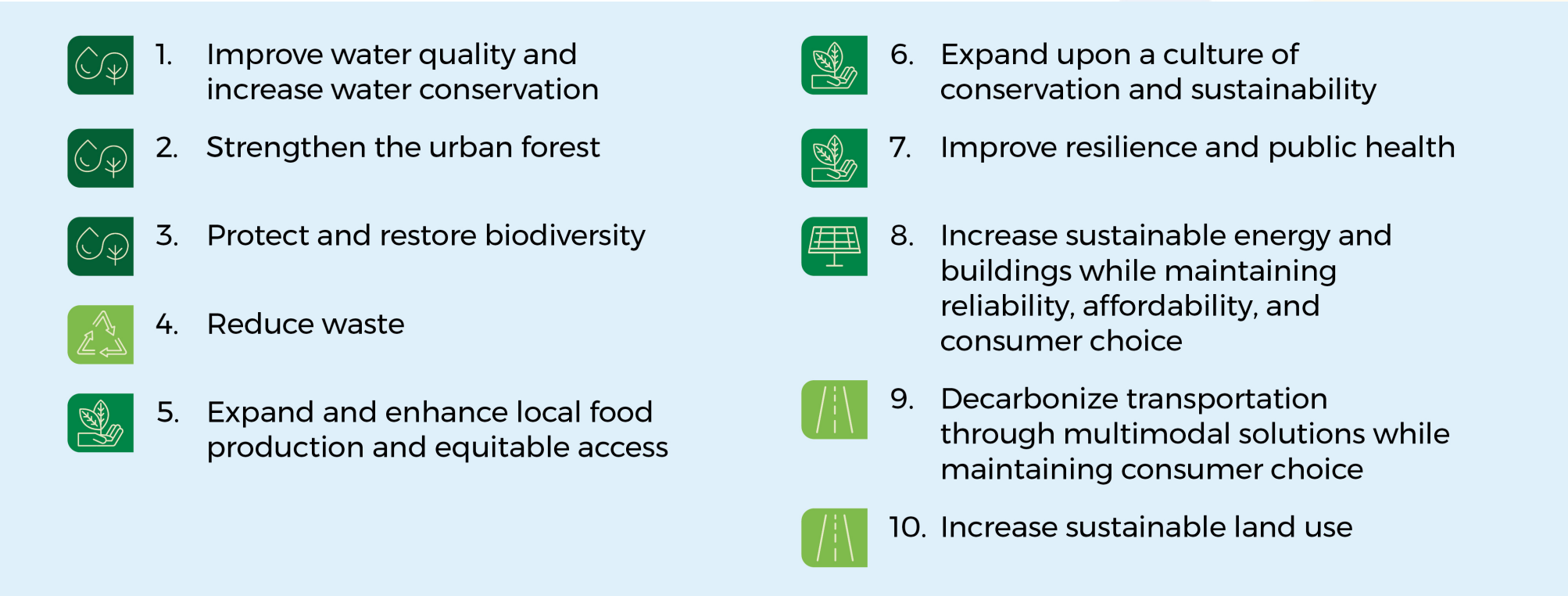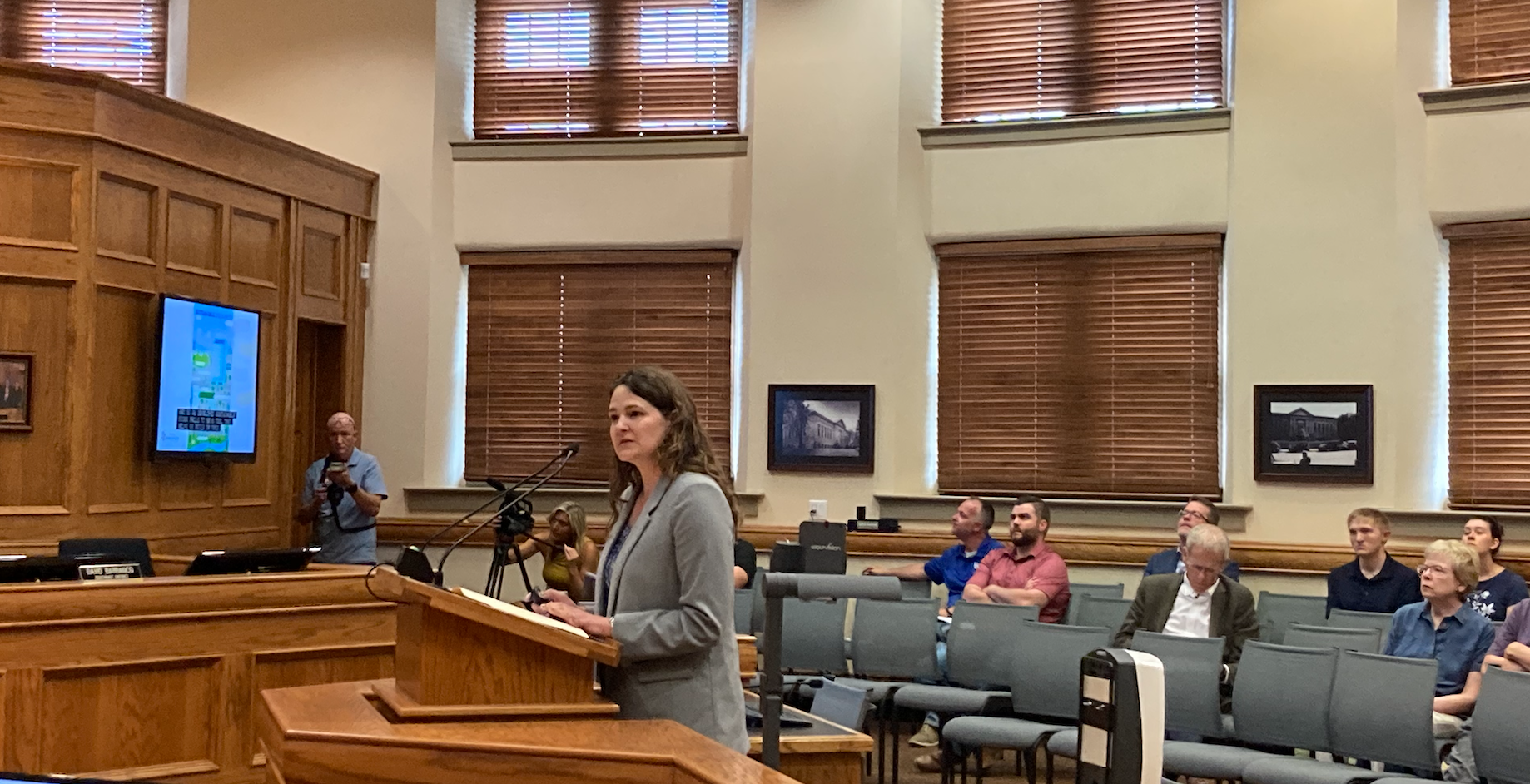Simplified: Dozens of Sioux Falls residents showed up at the City Council informational meeting Tuesday, many of whom got up to criticize the final draft of the city's sustainability plan for a lack of specific, measurable goals.
Why it matters
- The city's sustainability plan has changed significantly from its initial release over a year ago. The final version outlines 10 primary goals, each with a handful of possible action items to be done by either the city, the community or a public-private partnership.
- Because the document contains no mandates or policy changes, the City Council doesn't have to vote to approve it. That's also a change from last spring when what was then called the "Sustainability and Climate Action Plan" was en route to the council. It was ultimately pulled and sent back for revisions after extensive feedback before it ever made it onto an agenda.
- The first draft of the plan set a goal for the city to have net-zero carbon emissions by 2050. That goal, along with several others, has been removed from the final version.
"Without measurable goals this framework is likely destined to gather dust on a shelf," resident Julia Natvig told the council on Tuesday.
What are the goals in the final draft?
Here's a list of all 10:

You can see the suggested action items alongside each goal in the full Sustainable Sioux Falls plan.
"The actions listed in the strategies section are not exhaustive," Sustainability Coordinator Holly Meier said. "It was important for us to make this document a living document that takes into account how we want to be adaptable to emerging challenges as well as community changes moving forward."
What were the main concerns expressed by people?
Largely, people who spoke Tuesday were concerned about one of two things:
- The perceived lack of transparency with changes made to the plan between what the committee approved in December 2022 and the final report presented this week.
"This document was not written by, debated by or approved by the steering committee despite the fact that our names are still listed in this document," said Michael Heisler, a member of the 31-member committee who worked for more than two years on the sustainability plan.
2. The lack of specific, measurable goals as well as a lack of any accountability for making them happen.
"With words such as 'explore' and 'continue to work toward,' our city is not going to change any behaviors or practices," said Megan Eisenvos, resident and co-owner of IronFox Farms.
Other criticism centered specifically on Mayor Paul TenHaken, who in March 2022 stood behind the first draft of the plan which focused on net-zero emissions by 2050 and prioritizing social equity.
- TenHaken did not respond to a request for comment from Sioux Falls Simplified following the meeting Tuesday.
It's also worth noting that representatives from both the Home Builders Association and the Sioux Falls Chamber of Commerce stood up to voice their support for the plan and where it ultimately landed.
- Joel Ingle with the Home Builders Association was one of the six people added to the steering committee after feedback on the first draft of the plan. He told Sioux Falls Simplified he was happy with where the plan landed, but if you'd asked him a year ago, his answer would be different.
"I think there was some key industry people that were missing from the conversation early on, and I think it would’ve been important to have those folks sooner," Ingle said.
What did councilors have to say?
Councilor Greg Neitzert said it's no secret he was concerned about the first draft of the plan released last spring, but he's expressed gratitude for the final product.
"I really appreciate the recalibration and listening to a wide range of stakeholders," Neitzert said.
Councilor Rich Merkouris questioned what it means that the plan is a "framework" and not an action item for the council.
"How do we call that 10 goals of the city if the City Council hasn't approved it?" he asked. "I'd call that 10 goals of the mayor."
Councilor Alex Jensen praised the committee's work on the plan and the added flexibility of the updated plan in "allowing the market to decide" the demand for more sustainable building practices.
What happens next?
The framework is intended to be a "lens" for the city to look through when making decisions, Public Works Director Mark Cotter said.
- It's also expected to be in place for the next decade, according to the text of the plan itself.
Because the plan itself doesn't require council approval, any actions inspired by it will be brought to the council on an individual basis.
- The next item expected to go before the council on this topic will be the results of an electric vehicle pilot program the city started last year.

